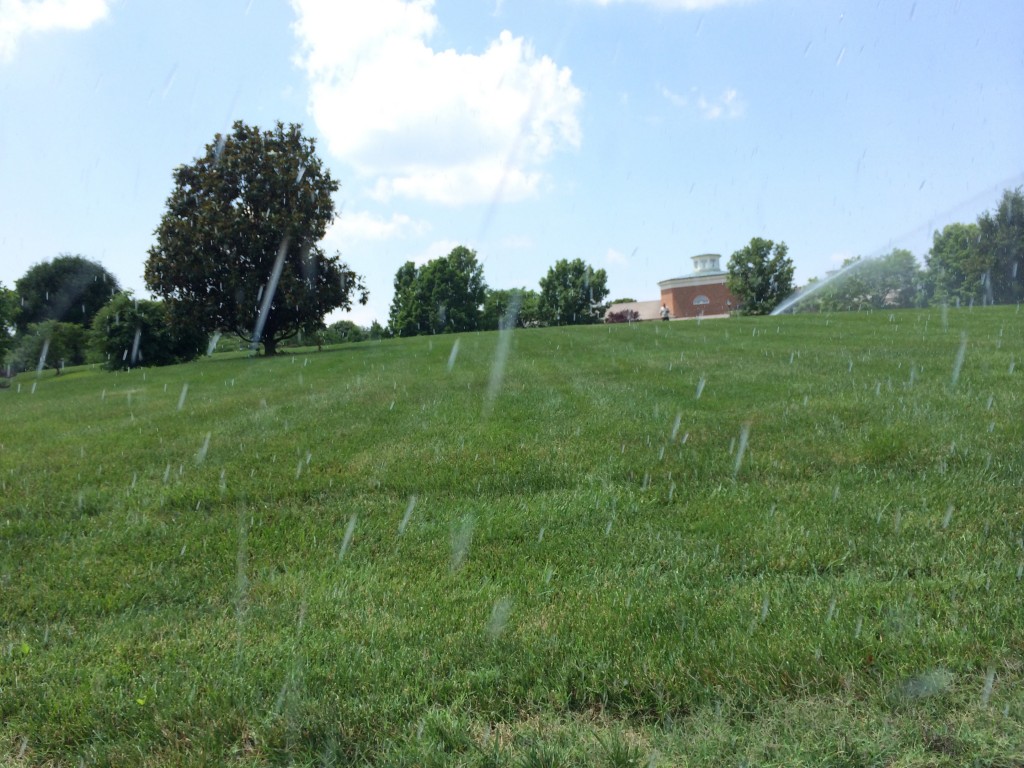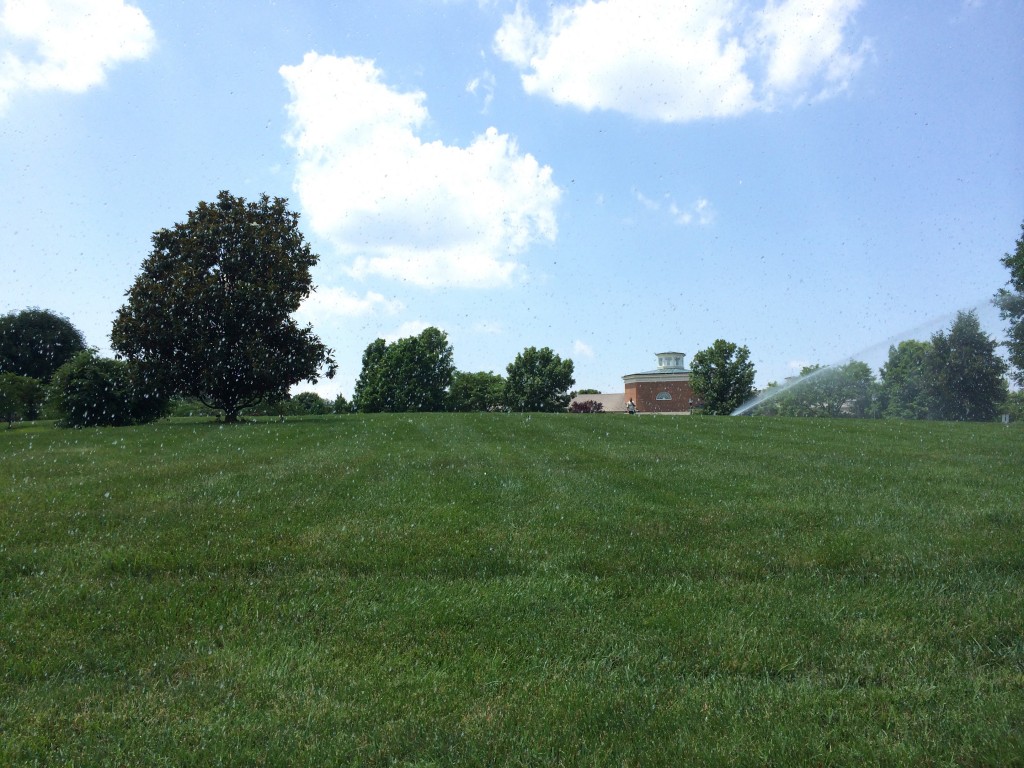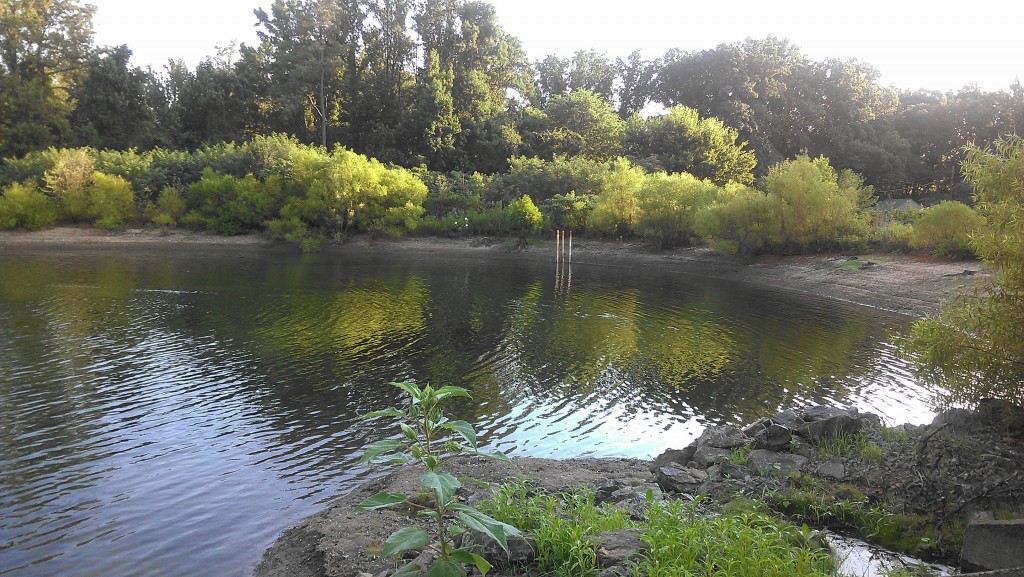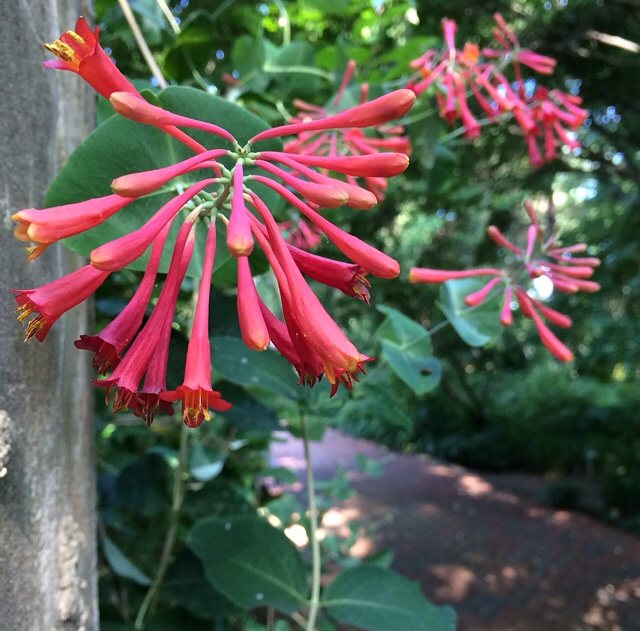3 Tips for Water Conservation
by Jonah Holland , PR and Marketing Coordinator, Lewis Ginter Botanical Garden

John Niemczyk, Lewis Ginter Botanical Garden Irrigation Technician, testing and trouble-shooting the watering system on the terrace lawn. While we might test our watering system during the day, we don’t typically water during peak daylight hours, due to loss of water through evaporation.

If you look in the center of the photo you can see the Garden’s irrigation tech, John Niemczyk, just in front of the brick Robins Visitor Center, as he adjusts the Garden’s sprinkler system.
Did you know that the irrigation water we use at Lewis Ginter Botanical Garden comes from lakes built specifically to collect rainwater and recycle it into water we can use to sustain our plants during dry spells? That’s the plan anyway. We collect the water run off from approximately just over 40 percent of the Garden’s property and buildings — a pretty good number. But ultimately during a drought our irrigation lake may go so low that we have to look at water alternatives. We are currently weighing whether we may have to add county water to the irrigation lake this week, if we don’t get some rain soon. But thankfully, most of the time Mother Nature provides enough rain in summer to refill our irrigation lakes as we use them.
John Niemczyk, Irrigation Technician here at the Garden, and our horticulture staff schedule the Garden’s watering to run early in the morning (which is the best option). Watering in the evening is a good second choice, but sometimes can encourage disease, particularly fungal ones, we we try to water in the early morning whenever possible. Niemczyk says when you avoid watering during the heat of the day, you can “save on both watering time needed and water evaporation.” Most of our Garden’s irrigation is on an automated system, to make watering during early hours an easy choice.

When the irrigation lake is full, the overflow is at the northern end of the lake, and only the top portion of the pipes in this photo are visible. You may have to click on the photo to see a larger version to see the pipes in detail. Photo by Shane Tippett
Using the earth’s natural resources carefully is really important to the Garden. So is educating others about what they can do to help at home. So, here are three easy things you can do at home to help with water conservation:
-
- Water in early morning or later in the evening when less evaporation is likely to occur.
- Use recycled water — you can collect it in a rain barrel, or cistern, or if you have a larger property like Lewis Ginter Botanical Garden, you can collect it in a lagoon or irrigation lake. Recycled water is also cheaper (you don’t have to pay the county for it).
- Plant natives that don’t need much watering. Native plants are plants that would occur naturally in this region — ones that were here before European settlers. The Virginia Native Plant Society is a great place to learn more about Virginia natives, including 2014 wildflower of the year, coral honeysuckle, (Lonicera sempervirens).
